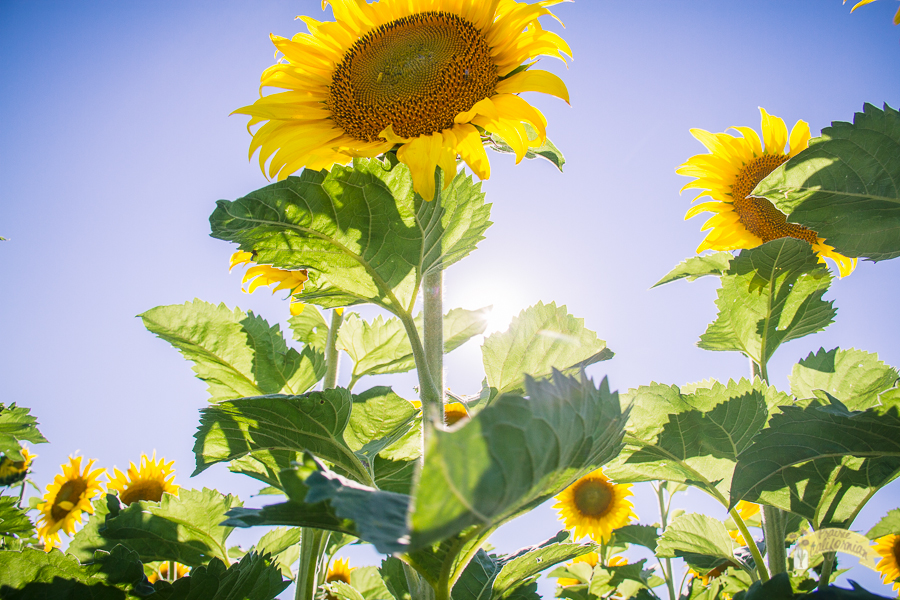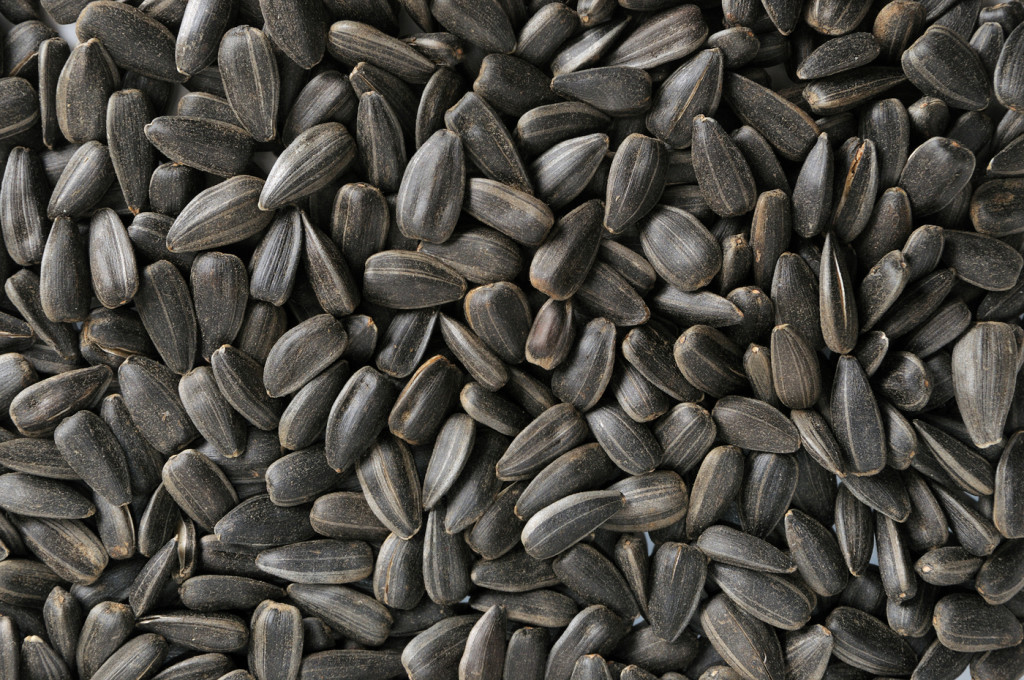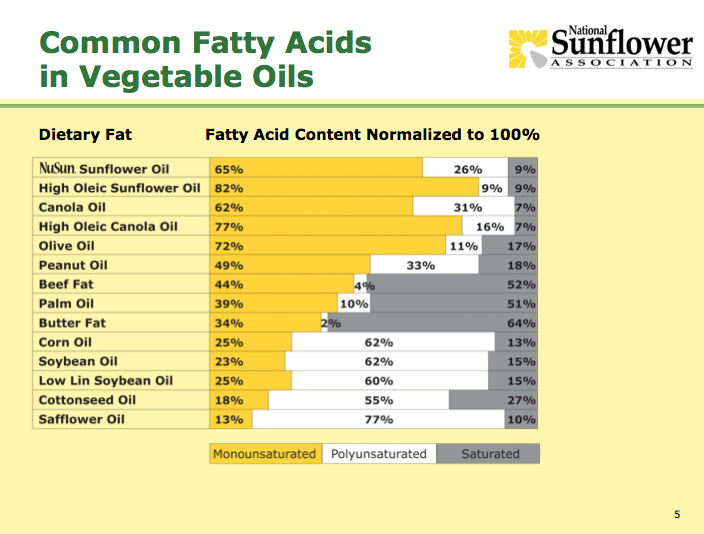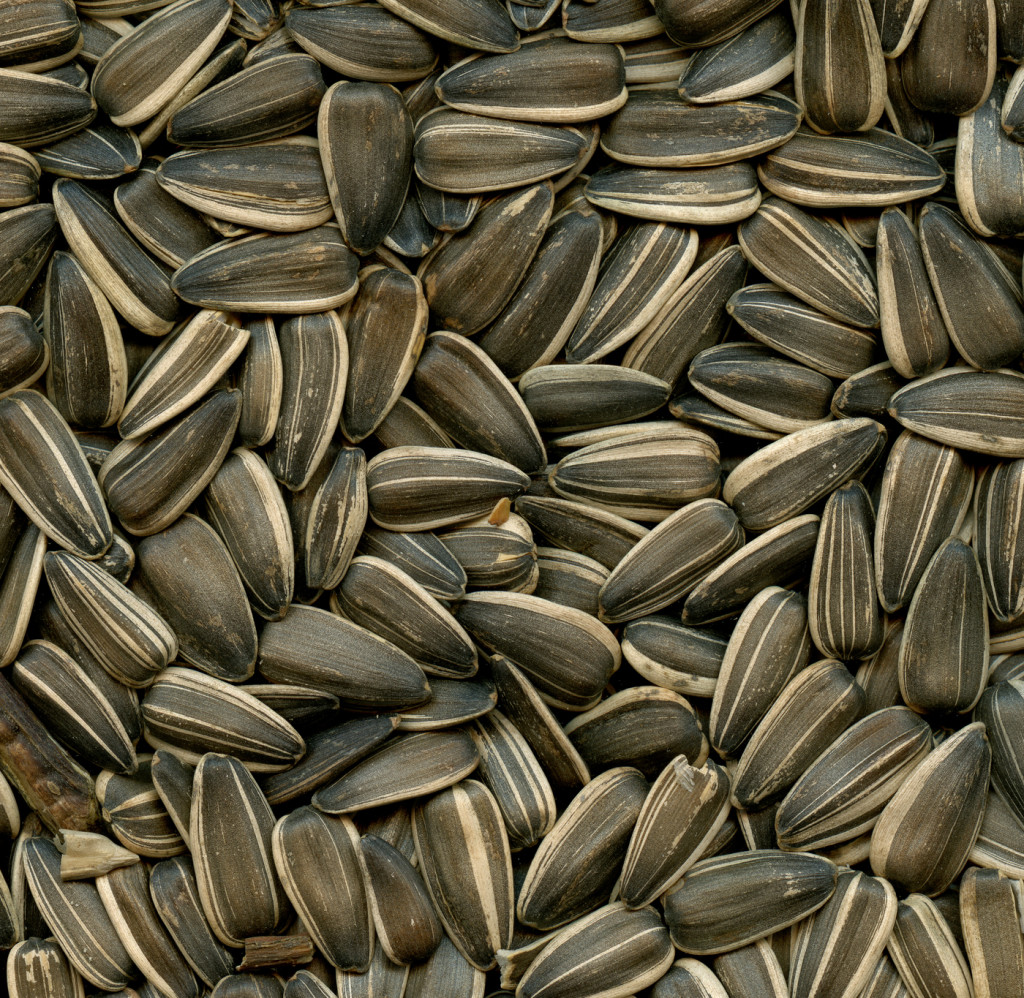
Throughout this series, I’ve talked a lot about why we grow the four crops we do and how we cycle through our crop rotation. I’ve shared about how we grow these crops because we have the opportunity to do so. Planting a variety of crops for our operation lowers our risk. It lowers our risk because our area we can have a great short season and a bad long season or vice versa. In turn, we utilize a variety of short season AND long season crops. Our climate and seasons simply aren’t set up for a full season crop such as corn all the time.
We plant sunflowers on the farm because it is a good warm season broadleaf that uses the leftover nitrogen in the soil from the previous corn crop. The flowers are planted in between the previous year’s corn rows. We are fortunate in our area to be able to plant sunflowers as many places around us are too wet or have a problem with black birds.
Sunflowers are generally grown for two different uses, three if we are being specific. Many times there is confusion about what type of sunflowers we grow. So I wanted to start by going over both types of sunflowers grown.
Oilseed
On our farm we grow what are called oilseed sunflowers. Oilseeds can be identified because they are typically smaller than the ones you enjoy at sporting events and completely black hulled. Oilseeds are high in oil content and are typically processed into sunflower oil and meal. These black oilseeds are also the seed of choice in most bird feeds, although some small confection seeds can be used as well. Roughly one-quarter of all sunflowerseed production is used to produce birdseed. Sunflowerseeds are considered a premium bird feed ingredient because of their high oil content and thin hulls. Growing oilseeds gives our farm options when it comes to market those seeds. Depending on the year, we can either sell our sunflowers into the oilseed market to be crushed or we can sell them into the birdseed market.
Livestock, typically beef and dairy cattle, consume the leftover sunflower meal as part of a feed ration. Sunflower meal most often utilized near crushing plants in North Dakota and Kansas. Export demand for sunflower meal is limited, with small amounts shipped to Canada.
Oilseeds are also divided up into three different types or varieties: NuSun, Linoleic, and High-oleic.
Traditionally, high-oleic and linoleic were the two varieties offered for oilseed sunflowers. It wasn’t until the late 1990s that NuSun varieties were put on the market. Historically, the United States has produced a number of oils with high levels of linoleic acid (present in sunflower oil as well). The most predominant is soybean oil and this oil has dominated the domestic market. Corn oil also contains high levels of linoleic acid and has also been in the domestic market for a long time. Sunflowers grown for oilseeds had a tough time in the domestic market.
It wasn’t until there were strong signals that the FDA planned to require labeling of trans fatty acids that sunflower oil was looked at as an alternative. Food manufacturers admitted that there were few oil choices that were free of trans fatty acids. Most oils high in polyunsaturated fatty acids like soybean, canola, and traditional sunflower need to be hydrogenated when used as a frying oil, which results in higher trans fatty acids.This presented the sunflower industry with an opportunity. The challenge was to rearrange the fatty acids in sunflower oil so that the oil would not require hydrogenation when used for frying. Oleic and saturated fatty acids provide the medium for frying, however, increasing saturated fatty acids was not a choice due to increased healthy concerns. It was because of this opportunity that NuSun oil was developed.
NuSun
Members of the National Sunflower Association, USDA, hybrid seed companies, processors and sunflower growers have all been involved in the progress of NuSun. NuSun oil is a mid-oleic variety that was developed as a result of a need in the industry for an oil that was stable without need partial hydrogenation and had lower saturated fat levels. NuSun sunflowers seeds produce an oil that meets those needs.
NuSun oil is consistent with current dietary fat recommendations that advise us to increase poly- and monounsaturated fats while keeping saturated and trans fats low. And it is because of this that NuSun has become favored over other oils for commercial use because it provides optimal health benefits, great taste, superior frying performance, all while remaining trans fat free and 10% lower in saturated fat. NuSun oil is most notably used in Frito-Lay’s Sun Chips.
Clearly developing and marketing this new NuSun oil has proven to be essential both in global and domestic markets. The National Sunflower Association has estimated that in 2005, nearly 70% of oilseed acres were NuSun. And that in 2007, around 85 to 90% of oilseed acres were NuSun, with the rest equally divided between high oleic and traditional linoleic varieties.
Linoleic
Linoleic oil is the original sunflower oil and until the NuSun variety was developed, it has been the most common type of sunflower oil. Linoleic is a polyunsaturated (65%) oil and is also high in vitamin E. This type of oil contains linoleic acid (an omega-6 acid) and is one of two essentially fatty acids our bodies need from food sources.
The balance of linoleic oil is monounsaturated (oleic) fats at 21% and saturated fats at 11%. The structure of linoleic oil, however, requires hydrogenation to remain stable for frying. But like other oils such as soybean and canola, it can be hydrogenated to a more stable form. Linoleic sunflower oil is available as a liquid salad oil and is also used in margarine and shortening applications.
High-Oleic
High oleic sunflower oil is very high in oleic (monounsaturated) acid. High oleic sunflower oil is usually defined as having a minimum of 80 percent oleic acid. Much like NuSun oil, high oleic sunflower oil offers a trans free oil solution. However, it is typically more expensive and not as widely used as NuSun has been in the recent years. Recently, the patent on high oleic sunflower oil and seed has expired. This has allowed more companies to get involved in producing and merchandising this oil. Right now, high oleic sunflowers are grown on a contracted basis (to ensure identity preservation) with customer needs driving total acres. However, there has been much speculation within the industry to address many of the hindrances in moving more towards utilizing high oleic oils.
Much like NuSun oil, high oleic oil provides excellent stability without hydrogenation and is desired for its’ long shelf life. And currently, the oil has many uses including bakery applications, spray coating oils for cereal and crackers, as well as used in non-dairy creamers.
If your brain is swimming in saturated, polysaturated, unsaturated… Here’s a graphic to help illustrate the fatty acid profiles of different oils.
NON-OILSEED
Non-Oilseed sunflowers (typically known as confections) are the seeds we all love to enjoy at sporting events across the nation. They are the typically larger seeds with a black and white striped hull. On our farm, our reasoning behind choosing oilseeds versus confections is two-fold. First, due to our location, it is more difficult for us to source a market to sell confection seeds. Second, there are several hindrances to growing them in our specific area. Many of the NuSun varieties offer us with better in-plant disease protection. Confection sunflower heads tend to also be larger and therefore are more prone to blowing over in high winds.
Since there is a demand for confection sunflowers, there is also a premium for farmers to grow them. It is one of those higher risk, higher reward scenarios in farming. It is up to each farm to decide what risks and what rewards are worth it. And as the agricultural markets continually shift, maybe there will be a time in the future we will grow confections.
Confections are typically sold for two different markets: in-shell or kernels (dehulls). Confection sunflower seeds are graded according to size and separated into groups. The largest size will go into the in-shell market. The medium-sized seeds are usually hulled for the kernel market. The smallest size will go into the bird and pet feeding market. Approximately 10-20 percent of U.S. production is used in shelled kernels, whole seeds, and nut and fruit mixes containing sunflowerseed. Confectionary sunflowerseed competes with nut crops such as peanuts, almonds, walnuts, cashews, and specialty grains such as millet and flax used in the production of multi-grain breads.
In-Shell
Today, about 25 percent of U.S. confection sunflower seeds are consumed domestically in-shell. Most are roasted and salted in the shell and eaten as a snack. Traditionally and currently, exports of confection seed remain steady, despite increases in world production in places like Argentina. This is mainly because U.S. seed is valued for its consistently larger size and uniform quality. Spain, Turkey, and China are the primary destinations of U.S. in-shell seed exports, but there are also customers in the Middle East and some European countries.
Kernels
Before hulling, the medium-sized seeds are passed through an air separation chamber to remove foreign materials. The separation of the hull and kernels is occurs through a combination of forced air and gravity. After the hulling process, each kernel is passed through an electronic sensing device which rejects discolored and deformed kernels. Kernels are available raw or roasted, as well as roasted and salted. Kernel pieces or “chips” are also available and are utilized in bakery applications or processed foods like granola bars.
SUNFLOWERS FOR SEED
Technically, there is a third type of sunflower grown and that is for seed. All of these oilseed or non-oilseed sunflowers we plant on our farms have to come from somewhere.
The vast majority of the sunflowers planted across the nation and even around the globe are grown in California. According to the National Sunflower Association, California (specifically the Sacramento Valley) produces roughly 95% of the hybrid seed planted each year by U.S. growers. And an even larger volume of hybrid seed from California is exported to Europe and Asia.
What makes the Sacramento Valley the best location to grow hybrid sunflower seed? Climate during the growing season of March to October is extremely favorable. Little to no rainfall during the spring, summer, and fall means acres are irrigated which gives the plants the exact amount of moisture they need: not too much and not too little which alleviates stress on the plants. Diseases that plague our sunflowers here in North Dakota are basically nonexistent due to the Valley’s lack of rainfall and very low daytime humidity.
WHY SUNFLOWERS?
Sunflower seeds are one of the most nutritionally dense whole foods. They are packed with protein, fiber, Vitamin E, and healthy fats.
Some advantages of sunflower seeds over other sources of whole foods:
- Two times more protein than walnuts, pecans, and macadamia nuts
- Six times more Vitamin E than peanuts
- Seven times more Folate than almonds, cashews, and pecans
- More fiber than an apple-comparable to a serving of bran flake cereal
- Ideal heart-healthy fat profile
- Naturally low in carbohydrates
Sunflower seeds have also played a key role as an alternative to people with tree-nut allergies.
For more information about health and nutrition of sunflower seeds, check out these resources from the National Sunflower Association.
To learn more about sunflower production in North Dakota, you can check out these posts:
Resources
Ash, M. (2015). USDA Sunflowerseed Information.
Hanson, R. (1998). Mid-Oleic Sunflower Hybrids Debut.
Hofland, C. (1990). Sunflower Kernels in Bakery Food.
Kleingartner, L.W. (2002). NuSun sunflower oil: Redirection of an industry
National Sunflower Association. (2015). Consumers Love Eating In-Shell Seeds.
National Sunflower Association. (2006). NuSun Sunflower Oil.





Nice article. I’m in western Nebraska and work on a farm where we grow confection sunflowers. There are two processors for the confection seeds within 150 miles of us (goodland kansas and fort Morgan Colorado) and we no-till them into wheat stubble. They’re a good crop for us due to not needing as much moisture as corn.
I hd no idea what the difference in all of different types of sunflowers was so I loved this post. Thanks for enlightening me. I now know that they are more than just cool flowers to look at and use for birdseed!